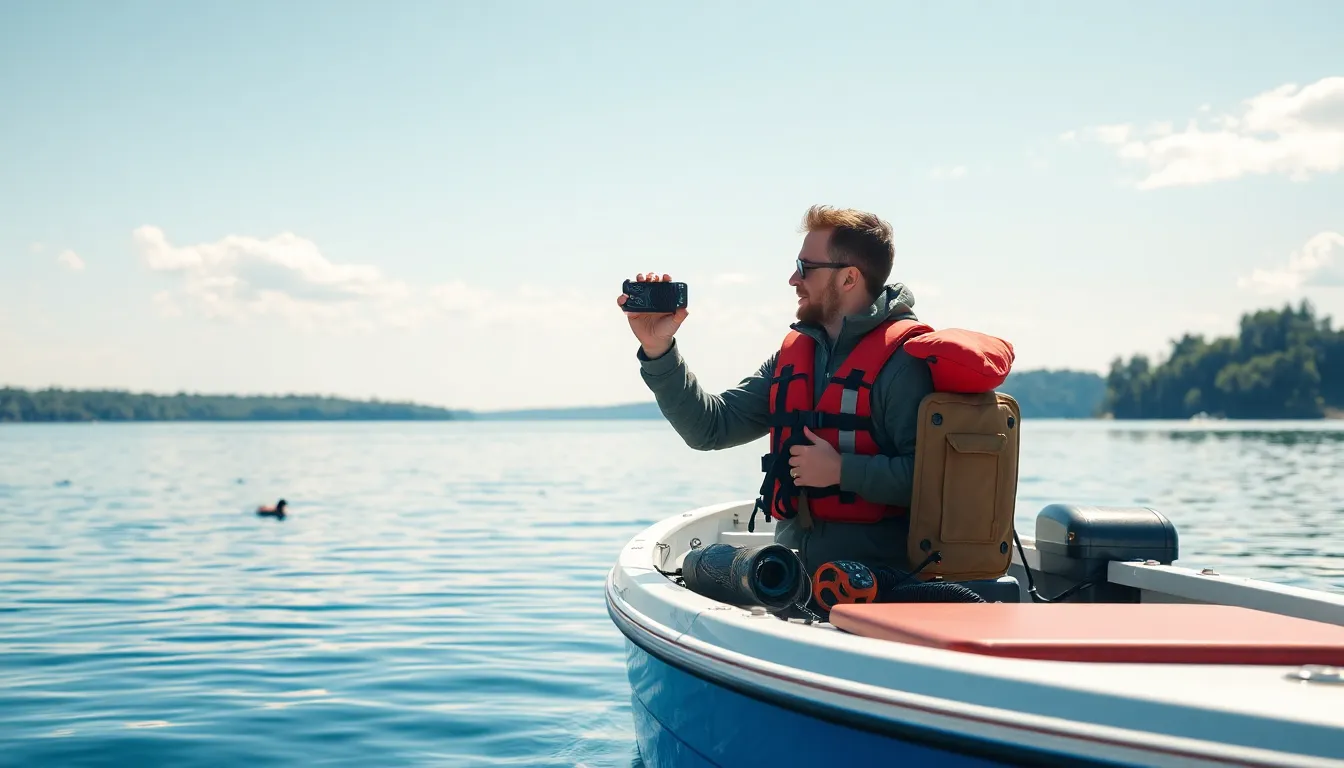Planning a weekend getaway on the water? Don’t forget to file a float plan! It’s not just a fancy term for a boating to-do list; it’s your lifeline when the unexpected happens. Picture this: you’re cruising along, the sun’s shining, and suddenly you realize you forgot to tell anyone where you’re headed. Not ideal, right?
You File A Float Plan For A Weekend Trip Which Of These Should Be Included In The Plan
Filing a float plan significantly enhances safety during water activities. By providing essential information regarding location and itinerary, it enables rescuers to act quickly in emergencies. Boaters expose themselves to various risks, including adverse weather conditions and equipment failure. Without a float plan, the chance of prolonged searches increases dramatically.
Communication serves as a key factor. Informing a family member or friend ensures someone knows the intended route and expected return time. This knowledge may prove vital if a distress signal is necessary. Additionally, it can help eliminate confusion or false alarms about a boater’s whereabouts.
A float plan outlines critical details. Items like vessel description, number of passengers, and emergency contact information foster clarity. Such transparency allows rescuers to anticipate challenges and respond more effectively. Moreover, specifying alternate checkpoints allows for more precise search efforts if complications arise.
Reinforcing preparedness proves beneficial. Regularly filing a float plan promotes a habit of careful planning and risk assessment. This proactive approach leads to increased awareness of potential dangers, encouraging safer practices on the water. Ultimately, a float plan acts as a safety net, providing peace of mind for both boaters and their loved ones.
Key Components of a Float Plan

Filing a float plan requires attention to specific details that enhance safety during any water outing. Each component serves a vital role in ensuring effective communication and preparedness.
Vessel Information
Vessel information includes the boat’s make, model, and color. It also covers registration number and any distinguishing features that make identification easier. Describing the size and type of the vessel helps rescuers understand its capabilities. Listing onboard equipment such as life jackets, flares, and radios contributes to overall safety planning. Providing this information ensures that search teams can quickly identify the vessel during an emergency.
Trip Details
Specific trip details lay out the intended route and destination. The float plan should map out departure and return times to keep loved ones informed. Including waypoints or planned stops allows for precise tracking. If circumstances change, documenting alternate routes can be beneficial. Accurate trip details enable rescue operations to focus searches effectively when necessary.
Emergency Contacts
Emergency contacts are crucial for swift responses during emergencies. The plan should list at least one person who knows the trip details and is reachable. Including multiple contacts ensures better communication options. Each contact should understand their role and how to respond if a situation arises. Providing this information fosters a support network ready to assist in case of a distress signal.
Safety Considerations
Prioritizing safety involves understanding various factors that contribute to a secure boating experience. Key areas of focus include weather conditions and navigation.
Weather Conditions
Monitoring weather conditions becomes essential before setting out on water. Boaters should check forecasts for wind speeds, precipitation, and storm warnings. Sudden changes in weather can lead to dangerous situations. Awareness of the water temperature also plays a critical role, as colder temperatures can increase the risks of hypothermia. Ensuring suitable gear for different weather scenarios enhances comfort and safety during the trip.
Navigation and Course
Effective navigation ensures a smooth voyage and minimizes risks. Boaters must familiarize themselves with the route, using charts and GPS devices for guidance. Knowing points of interest along the way can help in case of emergencies. Identifying potential hazards such as shallow waters or busy channels proves beneficial. Regularly communicating course updates with emergency contacts reinforces safety for all involved, providing exact information about your location.
Best Practices for Floats Plans
Filing a float plan involves several best practices to ensure maximum safety during water trips. Include accurate vessel information, such as the make, model, color, registration number, and any distinguishing features. Ensure this data helps authorities quickly identify the boat in emergencies.
Outline trip details clearly. Specify the intended route, departure and return times, and any planned stops. Providing this information enhances tracking accuracy during search operations if problems arise.
Communicate with emergency contacts. Select at least one person who understands the trip details and can effectively coordinate assistance if necessary. Keeping communication lines open fosters a solid support network.
Stay vigilant about weather conditions. Regularly check forecasts for any changes in wind speed, precipitation, or storm warnings. Be aware that sudden weather variations can create dangerous situations on the water.
Know the water temperature. Cold temperatures significantly increase the risk of hypothermia. Understanding the environment allows boaters to take appropriate precautions based on their specific trip.
Familiarize with navigation tools. Utilizing charts and GPS devices promotes better route planning and hazard identification. Knowing the area can prevent perilous situations.
Constantly update emergency contacts with course information. This practice improves response time in emergencies, providing accurate location data. Regular updates keep concerned individuals informed and ready to assist.
Conclusion
Filing a float plan is a vital step for any boater planning a weekend trip. It not only enhances safety but also ensures peace of mind for both the boater and their loved ones. By including essential vessel information trip details and emergency contacts in the float plan boaters can significantly improve their chances of a safe return.
Regular communication and awareness of weather conditions further bolster safety on the water. Adopting these practices transforms a simple outing into a well-prepared adventure. Ultimately a float plan serves as a crucial safety net that can make all the difference in emergencies.










